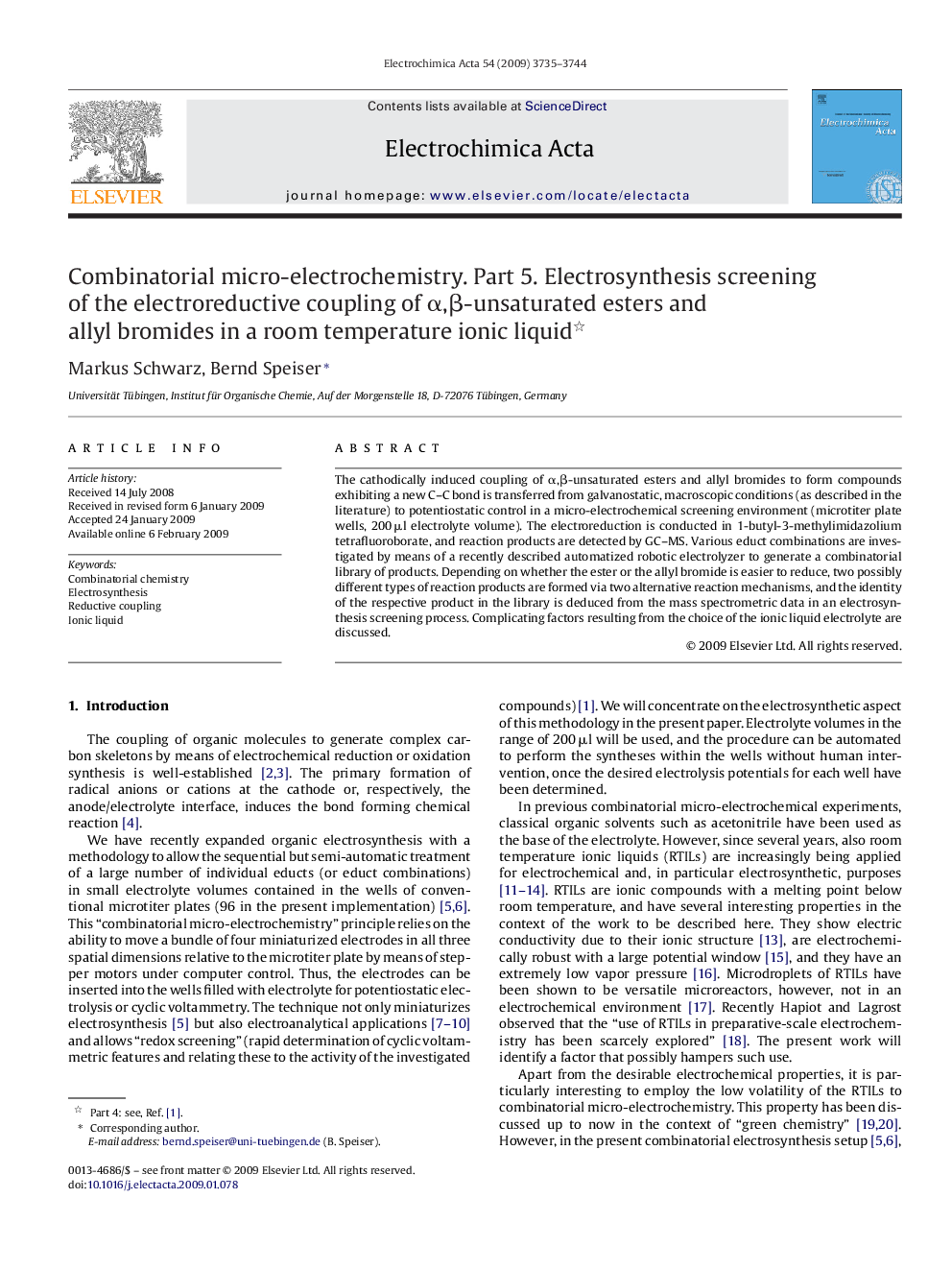| Article ID | Journal | Published Year | Pages | File Type |
|---|---|---|---|---|
| 193991 | Electrochimica Acta | 2009 | 10 Pages |
The cathodically induced coupling of α,β-unsaturated esters and allyl bromides to form compounds exhibiting a new C–C bond is transferred from galvanostatic, macroscopic conditions (as described in the literature) to potentiostatic control in a micro-electrochemical screening environment (microtiter plate wells, 200 μl electrolyte volume). The electroreduction is conducted in 1-butyl-3-methylimidazolium tetrafluoroborate, and reaction products are detected by GC–MS. Various educt combinations are investigated by means of a recently described automatized robotic electrolyzer to generate a combinatorial library of products. Depending on whether the ester or the allyl bromide is easier to reduce, two possibly different types of reaction products are formed via two alternative reaction mechanisms, and the identity of the respective product in the library is deduced from the mass spectrometric data in an electrosynthesis screening process. Complicating factors resulting from the choice of the ionic liquid electrolyte are discussed.
